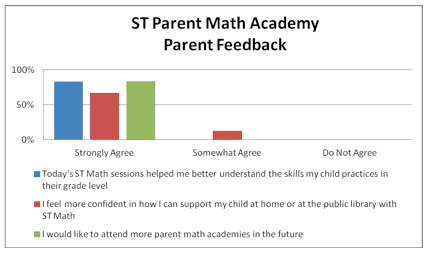Seattle School Breaks Down Language Barrier to Improve Math Proficiency

Personalizing and engaging students in math is an ongoing challenge in schools across the country. In Washington State, where countless organizations are working diligently to improve access to quality math learning for students’ futures, some schools are implementing a blended learning math program that draws upon game-based learning to increase math proficiency.
Midway Elementary, which has a 90 percent free and reduced lunch rate, 53.9 percent Hispanic population, and 36.4 percent transitional/bilingual, is K-6 elementary school in Des Moines, Wash. They were challenged in how to individualize instruction for students with a math program that was not language-dependent and could help students learn and refine their math skills. They began a new math curriculum and brought in a complementary blended technology program that would help to make math more accessible for their students’ needs.
The Highline Public Schools recommended Spatial Temporal (ST) Math, a visually based, digital math program featuring the animated penguin named JiJi. In the 2011-12 school year, Midway began implementing ST Math with 576 Kindergarten through 6th grade students.
Before diving in, school administrators were nervous that they would not be able to collect enough technology, technical support, or teacher buy-in to engage more than 570 students with the blended learning program for 90 minutes each week. What’s more, they began with some apprehension about the visual, non-language approach ST Math takes.
Yet, this turned around with support from the central office, who made a commitment to implement ST Math in all 18 elementary schools and marshaled the technical and teacher-support resources to make it happen. Not only did students and teachers take to the program quickly and it’s high time requirement, but ST Math increased the potential for differentiated teaching and learning.
Principal Rebekah Kim said, ST Math helped students improve deeper problem solving and reasoning skills while supporting alignment to the new Common Core State Standards in math.
“We are starting to see more classroom instruction that involves pictorial representations,” said Kim. “We believe the value of the pictorial experience in ST Math alongside our new math curriculum has enhanced our students’ access to math skills. These experiences have brought teachers to an understanding and appreciation that visual learning is powerful.”
“Some teachers have begun to use the ‘content games,’ in their core math instruction to make a connection to ST Math and also as a useful pictorial tool,” said Darci Downs, the building math specialist at Midway. Yet, it didn’t just have an impact on teachers. Students felt motivated “in a different way” with the help of JiJi.
“I am not really good at times (multiplications) so JiJi is helping me with my times tables,” said one third grade student. “He tells me when I don’t get it right.”
“When the teacher teaches about fractions, it makes it easy for us because JiJi taught it to us,” added another fifth grade student.
Kim added that this sense of motivation has increased a level of persistence and stamina to learn new, challenging concepts. “Students are more willing to persevere in the regular classroom and try to solve problems by themselves, based on the individual stamina they have worked on building in the ST Math program,” added Downs. “There is visible excitement with students when they are engaged in ST Math.”
Parents jumped on board as well. They felt they were able to understand and support their children’s learning with ST Math. This took place during a parent math meeting where district support, an ST Math representative and the school leadership collaborated and planned a tutorial for parents to learn about the program their child(ren) were engaged in 90 minutes per week:
 School wide, students progressed through an average of 71.8% of the ST Math program syllabus. A total 134 students completed 100 percent of the program this last year.
School wide, students progressed through an average of 71.8% of the ST Math program syllabus. A total 134 students completed 100 percent of the program this last year.
This year 2012-13 school year, 582 students are enrolled in the program. Kim expects positive growth over the coming years as they continue efforts with ST Math and their new math curriculum. “We were excited about how this might be able to make math concepts and skills more accessible for our 35 percent ELL population and students who were not meeting proficiency.”







Rebekah Kim
Thank you highlighting our school's implementation success!